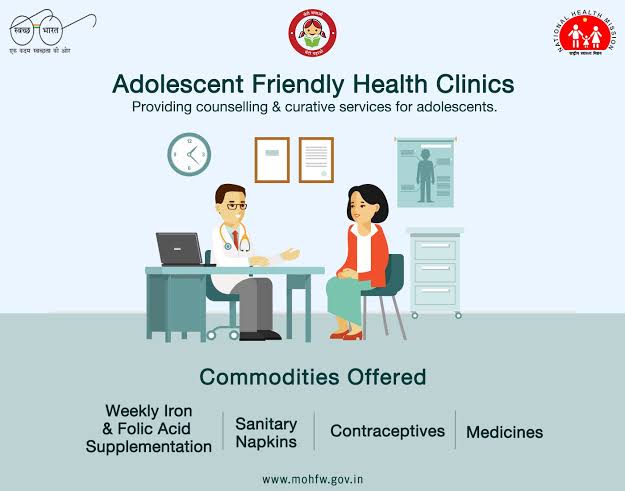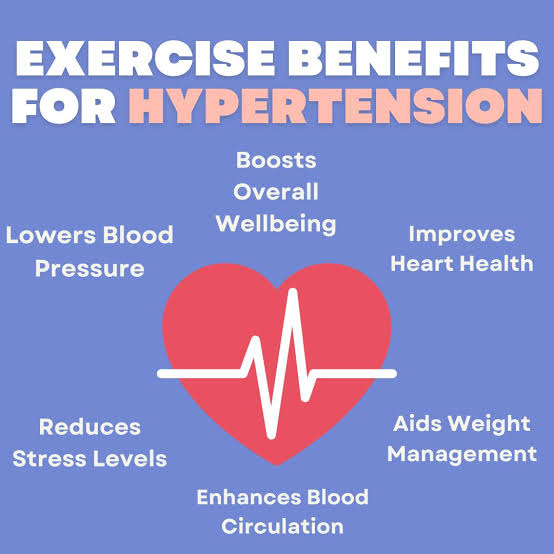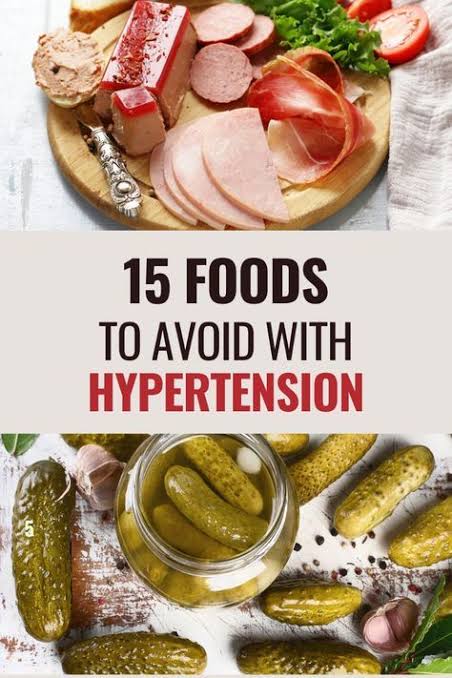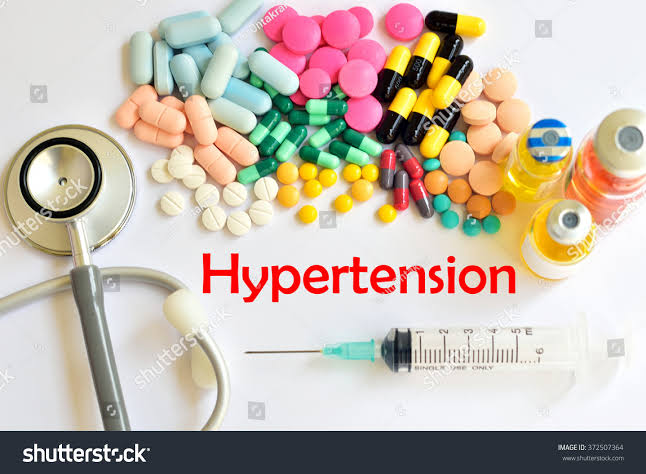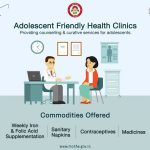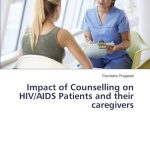Adolescent Friendly Services discover, how empower youth in India by providing accessible, inclusive health, education, and support systems.
Introduction
Adolescents are not just the revolutionaries of tomorrow, but they are able to take the flagship approach for change in our society today.
With over 1.2 billion adolescents globally, ensuring their access to youth-friendly services is not only a right but also a necessity.
Globally there are 1.2 billion adolescentsnow, and it is the fundamental right and also necessity to access all youth-friendly services that are available in our system and society.
The perception of Adolescent Friendly Services (AFS) refers to tailoring systems, particularly healthcare, education, and psychosocial services, to meet the unique needs, rights, and sensitivities of young people aged 10 to 19 years.

This article explores the need, principles, implementation strategies, and challenges of a youth-centered approach, especially in the Indian context and other developing regions. Let’s dive into how AFS can transform lives and build a stronger, healthier next generation.
Coping with Change in Adolescence:
Adolescents aged 10-19 years lead turbulent lives as they gradually leave behind their childhoods and grow to assume adult identities, roles, and responsibilities. They experience physiological, psychological, and emotional changes.
The stage of adolescence is characterized by experimentation and risk-taking, attempting to push boundaries and seeking answers. Processes of sexual maturity add another dimension as adolescents find themselves grappling with issues of attraction and sexual identity.
As relationships with adults evolve, peers (others of the same age group and sharing other similar characteristics) occupy a central role in their lives.
Adolescents in India find limited space to share their concerns and needs. They have many questions and concerns about what is happening to their bodies. But societal norms often discourage discussions on adolescent reproductive and sexual health.
Despite these challenges, adolescents often face barriers in accessing essential services due to lack of awareness, stigma, judgmental attitudes from adults, and absence of safe, inclusive spaces. This gap underscores the need for adolescent friendly service delivery models
Thus, they cope with puberty and other changes on their own with little or no access to supportive input and information. Information about safe sex practices and contraceptive choices is also rarely shared.
Meanwhile, child marriages and early pregnancies take their toll. It is important to remember that undernourished adolescent girls are more likely to give birth to children with low birth weight (less than 1.5 kg) and thus, perpetuate the cycle of ill health.
Even otherwise, adolescents engage in risky behaviors without an understanding of the consequences.
This leaves them more vulnerable to sexually transmitted infections (STIs) and HIV & AIDS. Further, patriarchal and gender norms multiply vulnerabilities for girls, more so as they enter puberty. They are allowed no title or space for self-expression or negotiation. Even their mobility is controlled by others.
Their nutritional requirements often remain unfulfilled. They also confront the issue of gender-based violence and burden. They may even have little say over their bodies or their aspirations for the future.
There are significant mental health concerns as well. Inability to adjust/cope and share related thoughts and feelings exerts a negative impact on the adolescents.
Changes in behaviors and moods may lead to deteriorating academic performance or socialization. Often, the adolescents merely need someone to understand them and talk to them.
However, if these aspects are not addressed, the underlying issues may spiral into psychiatric problems and maladaptive behaviors.
Summarize those radical changes in adolescents focused on particular issues like—
- Puberty and sexual health issues
- Peer pressure and substance abuse
- Mental health struggles
- Gender-based violence
- Early marriage and school dropouts

How to build Adolescent Friendly Services:
Adolescents constitute 21% of rural and urban India’s population and number about 243 million—the largest adolescent population in the world! Over the last few decades, their concerns have found increasing space in the policy and program framework in the country.
This is reflected in the Government of India’s Reproductive Child Health 2 Programme and the National Rural Health Mission. Linkages between relevant ministries have also grown over the years.
Some of the key schemes/programs aimed at adolescents include Menstrual Hygiene Management, Weekly Iron and Folic Acid Supplementation, and the Rajiv Gandhi Scheme for Empowerment of Adolescent Girls (SABLA).
The growing emphasis on encouraging adolescents to access adolescent reproductive and sexual health services (ARSH) in a conducive environment also led to the conceptualization of AFSH clinics. These clinics (known as Anwesha clinics in West Bengal) have been envisaged as service delivery points that
Provide a range of comprehensive services in a convenient and adolescent–friendly manner. In this regard, the counsellor is the key component of the AFHC program. They perform their crucial role towards the adolescent by providing comprehensible supportive inputs and facilitating referrals as needed.

Key Features of Youth-Centered in Adolescent Friendly Services
| Feature | Description |
| Friendly Health Staff | Trained to handle adolescent concerns with patience and empathy |
| Separate Waiting Areas | Ensures privacy and comfort for young visitors |
| Flexible Clinic Hours | After-school or weekend hours to suit adolescent schedules |
| Educational Materials | Leaflets, videos, and interactive tools tailored for young audiences |
| Community Engagement | Peer educators and youth champions spreading awareness at the grassroots |
Key Principles of Adolescent Friendly Services
To be truly effective, services must adhere to the following youth-centric principles:
Accessibility: Easily reachable in terms of location, timing, and affordability.
Acceptability: Respectful of adolescent values, beliefs, and privacy.
Equity: Considering all adolescents without any discrimination of caste, creed, gender, or ability.
Appropriateness: Aligned with adolescents’ real-life needs and situations.
Effectiveness: Designed to actually improve outcomes through feedback and adaptability.
Key Sectors for Adolescent Friendly Services
1. Healthcare Services
- Sexual and Reproductive Health (SRH): Confidential STI/RTI testing, menstrual hygiene support, and access to contraception.
- Mental Health: Counseling support, suicide prevention helplines, and peer educator programs.
- Nutrition: Screening for anemia, promoting healthy eating habits, and awareness about body image.
2. Educational Support
- Life skills education
- Gender sensitization and sexual health awareness
- Anti-bullying policies and emotional support units in schools
3. Social Welfare & Legal Services
- Protection from child marriage and abuse
- Legal support for adolescents in conflict with the law
- Empowerment of marginalized youth (tribal, LGBTQIA+, rural)
Youth-Friendly Care Essentials in India :
A youth-centered approach in service delivery is more than a buzzword—it involves deep engagement with adolescents as stakeholders. Here’s how:
Participation and Voice
- Involve adolescents in decision-making and design of services.
- Youth advisory boards and student health committees.
Weekly Iron Folic Acid Supplementation (WIFS)
- Providing the one (01) IFA tab( Composing with 100mg of elemental iron and 500mcg (0.5mg) of folic acid) for every running student or out-of-school student for each week.
- Screening of anemia for detection of Hb level for every student at certain intervals.
DE worming Programme :
- Provide one (Albendazole 400mg) tab for every students and out of school girls twice in a year ( 6 month interval)
Menstrual Hygiene Scheme (MHS)
- Community-based awareness generation on menstrual hygiene for every adolescent girls.
- Providing sanitary napkin packets for every month for adolescent girls.
Peer Educators
- Adolescents are more likely to open up to someone of their age.
- Peer-to-peer education builds trust and drives behavior change.
Confidential and Non-Judgmental Counseling :
- Confidentiality is key to encouraging young people to seek help.
- Staff must be trained to handle sensitive issues with empathy.
Gender Inclusivity
- Services must be tailored for both boys and girls.
- Address LGBTQIA+ concerns with sensitivity and respect.
Digital Inclusion
- Chatbots, helplines, and mobile apps offering SRH and mental health support.
- Online counseling for remote and underserved areas.
Stakeholders’ Role in Adolescent Friendly Services:
Healthcare Providers
- Train in adolescent psychology and counseling.
- Ensure services are adolescent-specific and non-stigmatizing.
- Foster open communication.
- Avoid stigma and encourage help-seeking behavior.
Educators
- Integrate life skills, consent education, and SRH into the curriculum.
- Act as first responders to signs of distress.
Policy Makers and NGOs
- Allocate budgets and ensure accountability.
- Monitor AFS programs and generate data for better planning.
Teen Support Gaps Still Exist:
Cultural Taboos: Especially around sex, menstruation, and mental health.
Gender Inequality: Girls often face mobility and financial restrictions.
Poor Training: Frontline workers may lack sensitivity or training.
Low Awareness: Many adolescents are unaware of available services.
Infrastructural Gaps: Especially in rural and tribal areas.
Top Strategies to Boost Adolescent Friendly Services
To make success in Adolescent Friendly Services in practice, we need:
- Capacity Building: Train professionals across sectors in adolescent care.
- Youth-Led Audits: Let adolescents evaluate the quality and friendliness of services.
- Community Engagement: Use influencers and youth icons to destigmatize issues.
- Feedback Mechanisms: Introducing installation of a suggestion box, survey, and organized focused group discussion.
- Innovative Outreach: Use theater, social media, and storytelling to engage youth.
Key Rules for AFHC Counselors
Establishing Rapport with Adolescent Clients
What you should be aware of
- The adolescent could be anxious or afraid coming alone or with parents/friends/relatives.
- Adolescents may be reluctant to disclose information on sensitive matters if their parents or guardians or even spouses are also present.

What you should do:
Greet the adolescent in a cordial manner.
Explain to the adolescent that:
- You are there to help them, and you will do your best to understand and respond to their needs and problems.
- Facilitating them for open communication and without any hesitation.
- They should feel at ease and not be afraid because you will not do anything that negatively affects them.
- You want them to decide how much they would like to involve their parents or others.
- You will not share with their parents or anyone else any information that they have entrusted you with, unless they give you the permission to do so.
- If the adolescent is accompanied by an adult, in their presence, explain to the accompanying adult that:
- You want to develop a good working relationship with the adolescent. At some stage, you may need some time to speak to the adolescent alone.
Recording Teen Health Concerns :
What you should be aware of:
Many adolescent health issues are sensitive in nature.
Adolescents may be reluctant to disclose information about sexual activity or sexual abuse because they fear being scolded or mocked.
Counsellors may feel inhibited in talking about these issues themselves—whether with adolescents or adults. These aspects can be discussed with colleagues.
What you should do
Start with non-threatening issues. Introductory questions, e.g., about the adolescent’s home situation.
Use indirect questions wherever possible—”Do “any of your friends smoke?” The adolescent replies, “Yes.” You could then ask, “Have you ever joined them?”
Reduce the stigma around the issue by normalizing the issue—for an unwanted pregnancy or a sexually transmitted infection, “I have treated a number of young people with the same problem you have.”
Uncovering Root Causes in Adolescent Care
What you should be aware of:
- Adolescents may have other health problems and concerns, besides the presenting problem or concern, but may not say anything about them unless directly asked to do so.
- They may not volunteer information because they may be embarrassed or scared to do so, or they may not be comfortable either with the service provider or the situation they are in.
What you should do: Consider using the HEADS assessment, which could assist you to
- Detect problems that the adolescent has not presented with
- Detect whether the adolescent engages in behaviors that could put one at risk of negative health outcomes (such as injecting drugs or having unprotected sex).
- Detect important factors in their environment that increase the likelihood of their engaging in these behaviors
HEADS is an acronym for
Home
Education/Employment
Eating
Activity
Drugs
Sexuality
Safety
Suicide/Depression
If time does not permit a full HEADS assessment, specific sections may be prioritized based on the presenting complaint and the important issues/concerns in the area.
History Taking
| Home | Where they live With whom they live Whether there have been recent changes in their home situation |
| Education/Employment | Whether they study/work How they perceive how they are doing How they perceive their relation with their teachers and fellow students/employers and colleagues Whether there have been any recent changes in their situation |
| Eating | How many meals they have on a normal day What they eat at each meal What they think and feel about their bodies |
| Activity | What activities they are involved in outside study/work What they do in their free time during week days and on holidays Whether they spend some time with family members and friends |
| Drugs | Whether they use tobacco, alcohol, or other substances Whether they inject any substances If they use any substances, how much do they use; when, where and with whom do they use them |
| Sexuality | Their knowledge about sexual and reproductive health Their knowledge about their menstrual periods Any questions and concerns that they have about menstrual periods Their thoughts and feelings about sexuality Whether they are sexually active, if so, the nature and context of their sexual activity Whether they are taking steps to avoid sexual and reproductive health problems Whether they have encountered such problems (unwanted pregnancy, infection, sexual coercion); If so, whether they have received any treatment and/or support (as applicable) Their sexual orientation |
| Safety | Whether they feel safe at home, in the community, in their place of study or work On the road (as drivers and as pedestrians, etc if they feel unsafe, what makes them feel so |
| Suicide /Depression | Whether their sleep is adequate Whether they feel unduly tired whether they eat well How they feel emotionally Whether they have had any mental health problems (especially depression) If so, whether they have received any treatment for this Whether they have had suicidal thoughts Whether they have attempted suicide |
How to Access Youth-Centered Adolescent Friendly Services in India
| Platform/Location | Services Offered |
| Government AFHCs (District/Block) | Free health checkups, SRH services, mental health support |
| School Health Programs | Health education, screening, referral to clinics |
| NGO Centers & Helplines | Peer support, counseling, referrals |
| RKSK Helpline / 104 | Confidential advice on adolescent health |
Search online or contact your local ASHA worker to find the nearest AFHC

Benefits of Teen-Centered Services:
Improved Mental Health Outcomes
Counseling and emotional support reduce anxiety, depression, and suicidal thoughts.
Better Sexual and Reproductive Health
Youth receive accurate information about contraception, STIs, menstrual hygiene, and consent.
Reduced Risk Behaviors
Education and life skills reduce substance abuse and risky sexual behavior.
Empowerment and Participation
Involving adolescents in decision-making boosts self-esteem and responsibility.
Bridge to Other Services
Adolescent Friendly Services refer teens to educational support, legal aid, or vocational training.
Global & National Adolescent Friendly Services Initiatives
Global Efforts
- WHO’s Global Accelerated Action for the Health of Adolescents (AA-HA!)
- UNFPA’s Adolescent and Youth Strategy
India-Specific Programs
Under RKSK, India has established more than 7000 AFHCs across urban and rural regions. Services include
- RKSK (Rashtriya Kishor Swasthya Karyakram): India’s flagship adolescent health initiative targeting nutrition, mental health, substance abuse, SRH, and violence.
- AFHCs (Adolescent Friendly Health Clinics): Clinics offering free, confidential, and non-judgmental services.
- School Health Program under Ayushman Bharat: Focus on health education and wellness through peer educators.
Weekly Adolescent Health Days
- Peer Educator Programs in schools and communities
- Helplines and mobile outreach initiatives
- Collaboration with NGOs and ASHA workers

AFHC Success Stories That Inspire
Bihar’s AFHC Clinics
The introduction of over 200 adolescent-friendly health clinics across rural Bihar has led to increased adolescent girls’ participation in menstrual hygiene sessions and greater awareness of reproductive health rights.
Peer Education in Maharashtra
Youth-led sessions in schools in Maharashtra have resulted in a 30% increase in students reaching out for mental health support in 2023–2024.
Progress of the AFHC program of West Bengal
For effective implementation of the AFHC program in West Bengal, a number of programs have been introduced, like the AFHC establishment and extension up to the PHC service area, WIFS, MHS, counselling service, Celebration of Adolescent World Day, and peer education. This intervention has been continued for the last few years.
Challenges in Implementation
Despite progress, barriers remain:
- Lack of trained counselors
- Social stigma around reproductive health
- Limited outreach in tribal or rural belts
- Inadequate funding for awareness programs
Moving Ahead with Youth at the Center
To create a sustainable, empowered future, adolescent-friendly services must move from being a policy checkbox to a people-centric revolution. This requires:
- Investing in technology and mobile health units
- Mainstreaming adolescent issues in media and pop culture
- Continuous training and monitoring of service providers
- Creating safe spaces for adolescents in every community
Conclusion
Adolescents today face unique health, emotional, and social challenges. Implementing Adolescent Friendly Services through a youth-centered approach ensures that the next generation receives the support they need to grow into healthy, confident, and empowered adults. Whether through a school-based session, a friendly clinic, or peer support, these services are shaping a brighter, more inclusive future for India’s youth.
“Adolescent Friendly Health Services,,: A Youth-Centered Flagship approach is not just a development strategy for adolescents but also a moral imperative. When young people feel heard, respected, and supported, they flourish into responsible, healthy, and empowered adults. By making services accessible, inclusive, and meaningful, we are investing in not just adolescents but in the future of our societies.
Let us listen to youth, involve them in decision-making, and ensure that every adolescent—regardless of gender, class, ability, or geography—has access to safe, supportive, and youth-friendly services.
The proper utilization of AFHC services by the beneficiaries is quite inappropriate. Lack of awareness is one of the main reasons for less utilization of available SRH-related services.
Through the proper execution of this flagship Adolescent Friendly Services program, by promotion or extension, is the cornerstoneof success of the adolescent sexual & reproductive health program.
Additionally, prevention of adolescent well-being problems demands a multi-sectoral approach where it includes the effective or productive participation of many partners like the adolescents, schools, parents or household members, society, and government and, most importantly, the duty of health care providers in providing health management services to the beneficiaries. The study also indicates a need for age-appropriate information and adolescent-friendly services.
Recommendation for Sustainability—
- For the fulfilment of the goal of Adolescent Friendly Services , an inclusive awareness generation should be raised among all types of health care providers.
- Regular training and refresher courses are necessary for health care workers. It is also necessary to assess female adolescents’ knowledge and practices in order to change their menstrual hygiene behavior and thereby improve their sexual and reproductive health.
- The active participation of adolescents and adult community members in the planning and delivery of AFHS is needed in order to make the services more responsive to community needs and user-friendly.
- Introducing the provision for supplying all necessary equipment and commodities, as well as regular monitoring and evaluation for smooth running of the Adolescent Friendly Services program.
- Frequent high-quality communication skills refresher training to improve ASHA and ANM knowledge of adolescent health care is needed so that they can encourage the adolescents about the nondisclosure and confidentiality policy.
FAQs Section
What is a youth-centered approach in Adolescent Friendly Services?
A youth-centered approach places adolescents’ needs, voices, and preferences at the center of service design and delivery, ensuring inclusivity and accessibility.
What are Adolescent Friendly Services?
Services that are tailored to the needs, rights, and expectations of adolescents, especially in healthcare, education, and welfare.
Why are Adolescent Friendly Services important?
They help improve access to SRH counselling, healthcare, mental wellness, and education, ensuring better outcomes and empowered youth.
Which age group is considered in Adolescent Friendly Services ?
Generally, adolescents are aged between 10 and 19 years.
How can I find an AFHC near me?
Visit your local PHC/CHC, ask ASHA workers, or call the RKSK helpline at 104 for assistance.
What are the characteristics of Adolescent Friendly Services ?
Accessible, confidential, respectful, inclusive, and effective.
How do peer educators help in Adolescent Friendly Services ?
They connect with adolescents on a personal level, promoting openness and awareness.
What does a youth-centered approach mean?
It means designing services with active involvement and feedback from youth.
What is RKSK in India?
Rashtriya Kishor Swasthya Karyakram—a government initiative for adolescent health.
What are AFHCs?
Adolescent-friendly health clinics offering confidential, nonjudgmental services.
How can schools contribute to Adolescent Friendly Services ?
Through health education, life skills training, and counseling support.
Why is confidentiality crucial for Adolescent Friendly Services ?
Confidentiality encourages open communication, builds trust, and ensures teens seek help without fear or shame. It builds trust and ensures more adolescents seek help.
What barriers do adolescents face in accessing services?
Stigma, lack of awareness, judgmental attitudes, and infrastructural gaps.
How can digital tools support Adolescent Friendly Services ?
Through online counseling, helplines, apps, and awareness campaigns.
Do Adolescent Friendly Services address mental health?
Yes, they include counseling, support groups, and awareness drives.
Are these services available in rural areas?
Yes, through outreach programs and AFHCs, though access is still limited.
Can parents be part of Adolescent Friendly Services ?
Yes, they play a key role in support, guidance, and encouraging access.
How are services made inclusive for LGBTQ+ youth?
By offering non-discriminatory, gender-sensitive, and empathetic care.
What training is needed for Adolescent Friendly Services staff?
Sensitivity training in adolescent psychology, confidentiality, and communication.
How do youth participate in service design?
Via advisory boards, feedback forms, and program audits.
What is the impact of Adolescent Friendly Services on early marriage?
They empower adolescents to delay marriage and focus on education and health.
How can NGOs support Adolescent Friendly Services ?
By filling gaps in service delivery, advocacy, and grassroots education.
Call to Action (CTA)
Explore your local Adolescent Friendly Services and make youth health a priority today.
